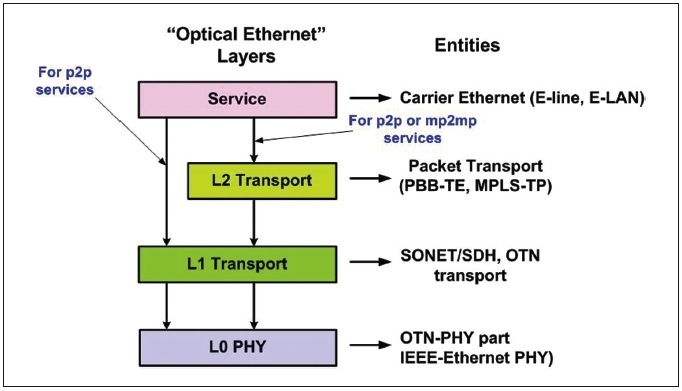- Related articles
- Optical Transceivers for Cisco WS-C3650-48PD-E Switch
- What is IEEE 802.3?
- All Cisco DWDM-SFP10G-61.41's information (List price, Specs, Datasheet PDF, Compatibility
- What is fiber optics used for?
- All Cisco DS-X2-FC10G-LR's information (List price, Specs, Datasheet PDF, Compatibility ma
- Optical Transceivers for Cisco WS-C3650-48PD-S Switch
- Optical Transceivers for Cisco WS-C3650-24TD-S Switch
- Used in 10GBASE-ER Standard optical transceiver models
- Optical Transceivers for Cisco WS-C2960X-24TS-L Switch
- All Cisco DWDM-XENPAK-58.17's information (List price, Specs, Datasheet PDF, Compatibility

Definition:
Optical Ethernet is the physical layer of the Local Area Network (LAN) communications protocol for sending data over fiber-optic cable. It is used for connecting Internet servers and switches inside equipment racks, within data centers, and between metropolitan data centers. Today the most widely used LAN data rate is 1 Gb/s, with increasing adoption of 10 Gb/s. These rates are insufficient to support core networking requirements, such as switching, routing, and aggregation in large data centers, Q1 Internet exchanges, and service provider peering points; and high-bandwidth applications, such as video on demand and high-performance computing environments.
What is Fiber Ethernet?
Fibre Channel over Ethernet (FCoE) is a computer network technology that encapsulates Fibre Channel frames over Ethernet networks. This allows Fibre Channel to use 10 Gigabit Ethernet networks (or higher speeds) while preserving the Fibre Channel protocol. The specification was part of the International Committee for Information Technology Standards T11 FC-BB-5 standard published in 2009.
Fibre Channel over Ethernet (FCoE) solves the problem of organizations having to run parallel network infrastructures for their local area networks (LANs) and their storage area networks (SANs). As a result, they have to operate separate switches, host bus adapters (HBAs), network interface cards (NICs) and cables for each of these networks. Even utilizing a virtualization solution like VMware can actually increase the number of network adapters required to carry traffic out of the servers.
What is Metro Optical Ethernet?
Metro Optical Ethernet (MOE) provides scalable bandwidth solutions designed to meet your growing business needs. MOE combines the convenience of Ethernet connectivity with flexibility of multiple bandwidth choices, resulting in rapid deployment with simple, economical upgrades. A MOE solution is typically less expensive than any other metro transport service. What’s more, granularity of service means that, unlike synchronous optical network (SONET), you can obtain precisely the bandwidth you need, whenever you need it. Regardless of the size or nature of your business, MOE gives you the connectivity you require and the performance you need from a provider with experience you trust.
Conclusion:
The combination of fiber-optic transmission technology and Ethernet-optimized data processing (Optical+Ethernet) is the perfect solution to deliver high-speed connectivity for data, storage, voice and video applications. We offer a proven and synergistic Optical Ethernet solution in which our FSP 3000 and FSP 150, combined with our network management suite, enable service providers and enterprises to develop cost-effective strategies that service the growing demand for wavelength and packet-based services.
Please click to check more related concepts:
| Ethernet standard | Fiber mode | Optical fiber |
| 1000BASE- T | Single mode | |
| 1000BASE | Multi-mode | |
| 1000BASE-SX | ||
| 1000BASE-X | ||






































































